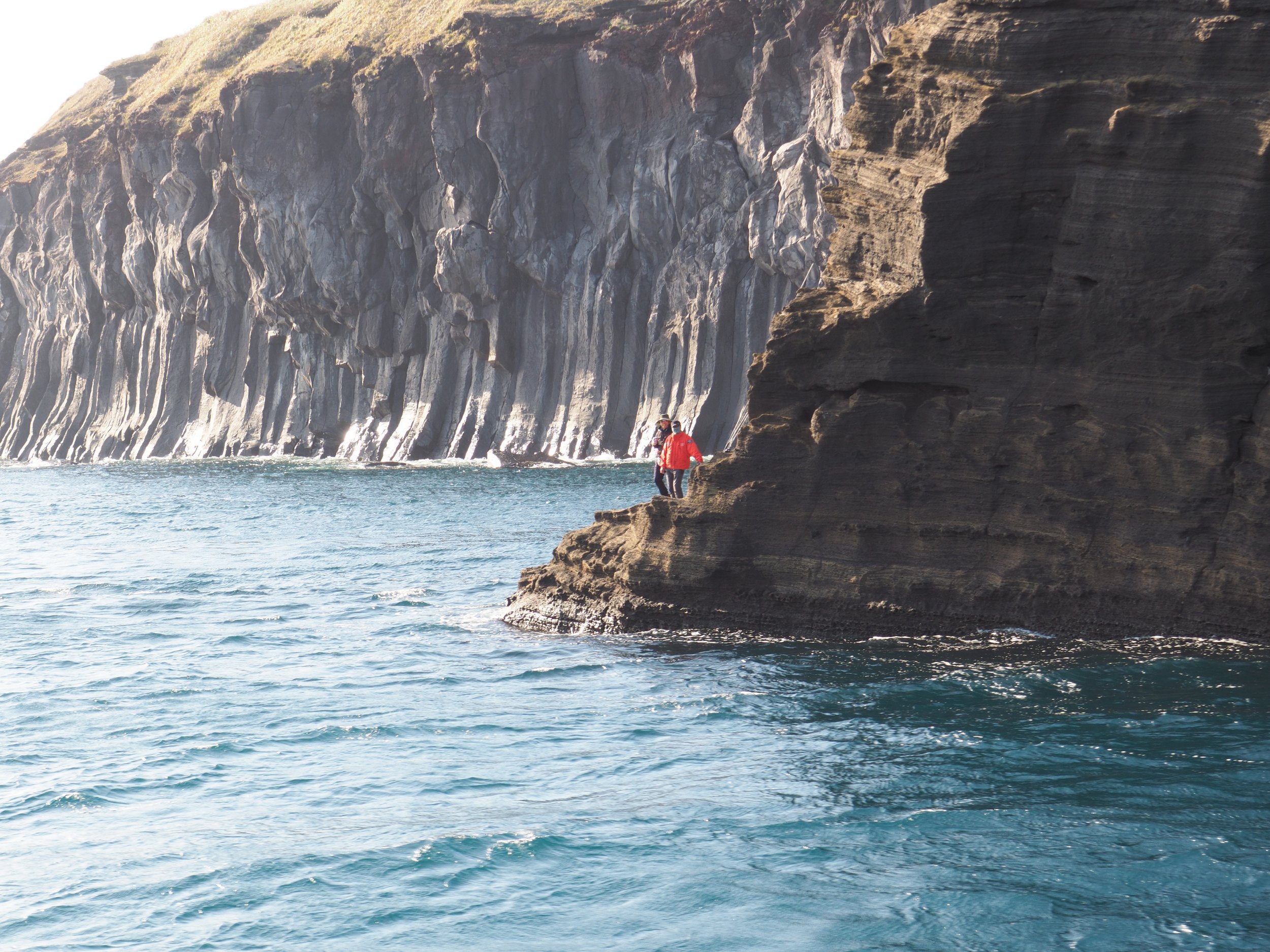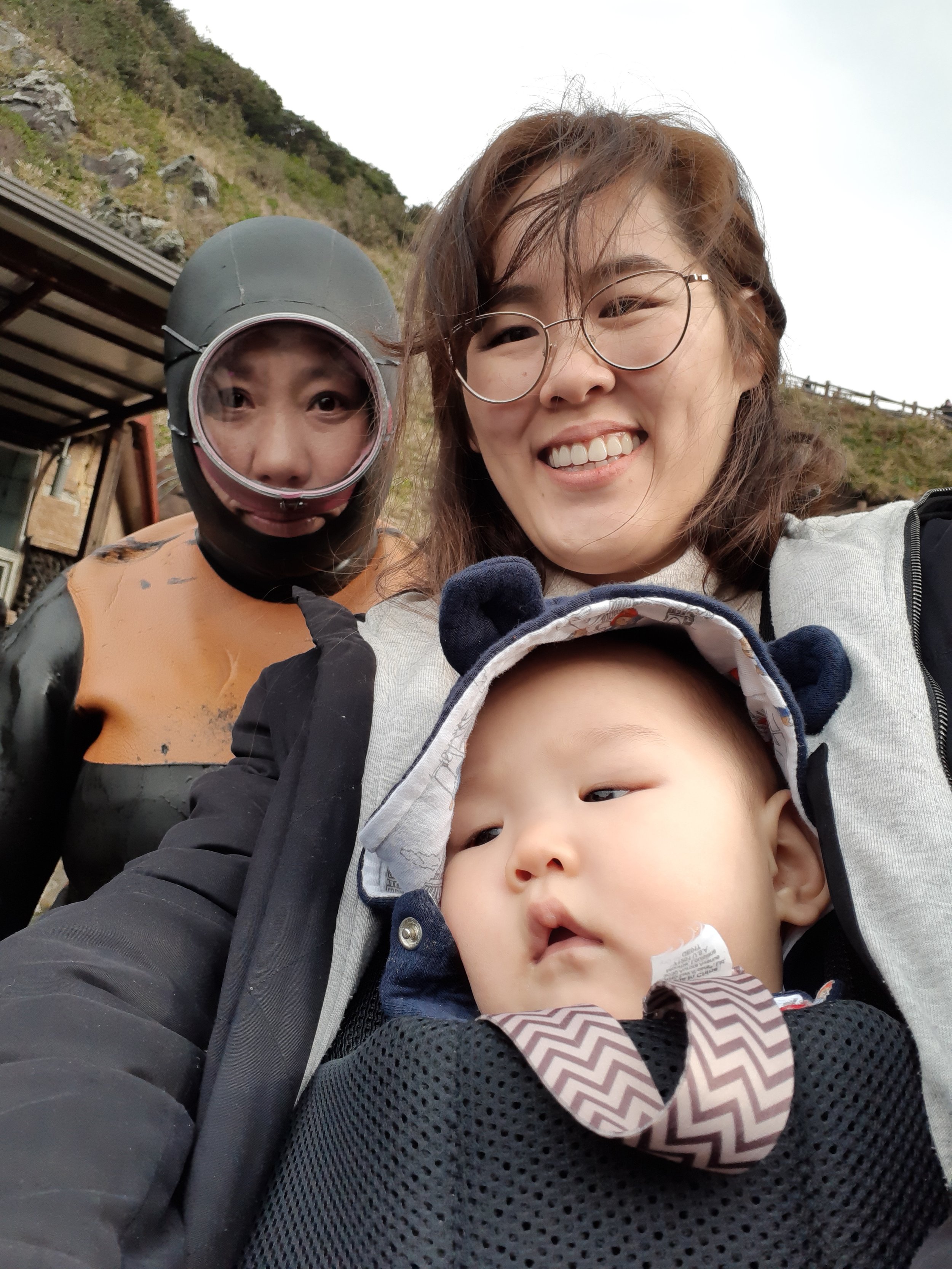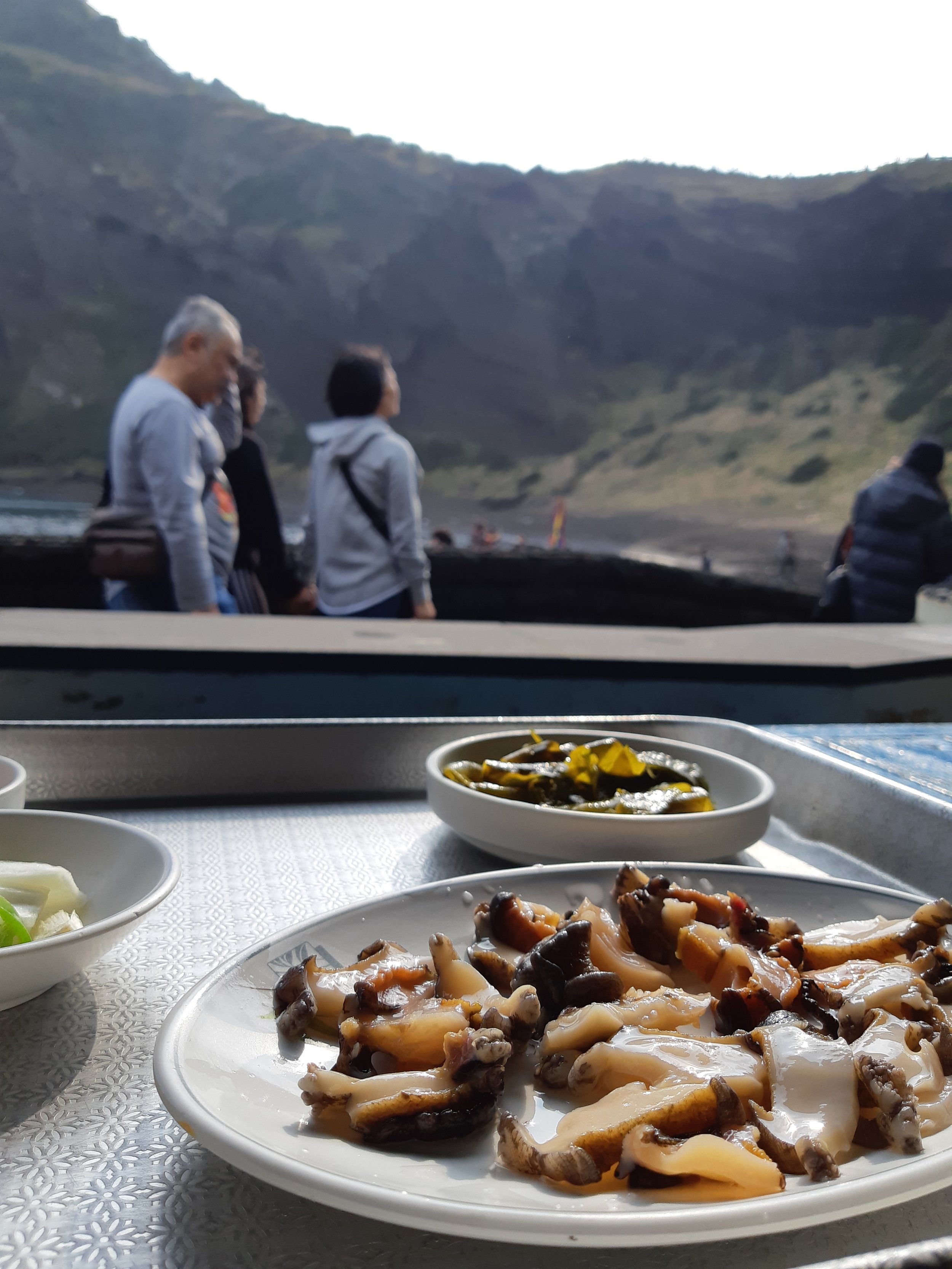Jeju Island Research Trip
For those who have never seen or heard of Jeju Island (Korea), I thought I'd do a brief photo-journey account of my research trip, since this is where my sophomore novel, The Forest of Stolen Girls, is set!
I'll start from the beginning. We (my husband, baby, and I) travelled to South Korea to see my parents, and since the flight over to Jeju Island was pretty close and affordable, we decided to spend three days there as part of my 'research trip' (haha). I've visited Jeju before, since half of my relatives live there (my dad is a native of Jeju), but I didn't pay enough attention to this island as a teen, too busy complaining about my allergies and teenager angst. But this time I was determined to absorb as much as I could of Jeju Island, which is known for three things in abundance, called "samda" (삼다): Wind, Stone and Women.
Why women? Long ago, many of the men would perish at the sea during fishing expeditions. The women of Jeju therefore worked the fields and dove for seafood in addition to raising children and taking care of the housework. Life was rough and poverty was widespread, but the women of Jeju were and are still renowned for their strength, resilience and strong spirit.
In fact, Jeju is famous for the Haenyeo women, a remarkable sisterhood of female divers. They dive deep into the sea while holding their breath for an astonishing length, without the use of any diving equipment. They dive throughout the year, even in frigid winter temperatures. And they choose to brave the fierce waters and the dangers below, so that they can return to land to support their families.
Why Stone? Because....it's literally everywhere! Jeju was primarily formed by volcanic rock, called basalt, so you'll find these black rocks all over the island from soaring black cliffs to miles of lava tubes below. You'll see them stacked into stone fences that meander through the grassland, and they're used as stone walls for orchards, fields and houses. I found these rocks so beautiful, so you'll notice mentions of them scattered throughout my book :)
Why Wind? Given its surrounded by the sea as an island, Jeju experiences strong winds throughout the year. There are occasional typhoons in summer and fall. So that's why traditional houses in Jeju were built to withstand the intense gusts of wind. Don't be surprised by bad wind-whipped hair days.
Speaking of traditional houses, I screamed with joy & cried a bit when we accidentally stumbled across an outdoor museum / folk village in Hallim Park. So much can be imagined about the life of ordinary Jeju people by studying their homes and the tools they used. I went around recording every little detail, from the material used for doors to how the rooms in the huts were connected.
This basket is where my daughter would have slept in if she were growing up in Joseon Dynasty-era Jeju haha.
We also visited Cheonjeyeon Waterfall (Jeju has many magnificent falls), where I stood before for quite some time, wondering out loud to my husband whether my heroine would survive if she were to leap off from the top. I realized that survival would be nearly impossible, so the scene of her leaping from a waterfall to escape a killer no longer exists (lol).
We visited many other places, but the most memorable moment was getting to watch Haenyeo divers at work.
And that's the end of this photo journey!
I'll leave you here with a plate of raw abalone, which we bought from the haenyeo who were selling their catch of the day. The abalone can be dipped into a sweet and spicy sauce. It's both soft and slightly crunchy, fresh to the taste and not at all fishy. You can enjoy it while gazing out at the lush green cliffs that overlook the sea, and you'll hear the haenyeo women dive then surface from the deep, making a hoowi hoowi whistling noise as they expel nitrogen from their blood. You may even hear their songs.











